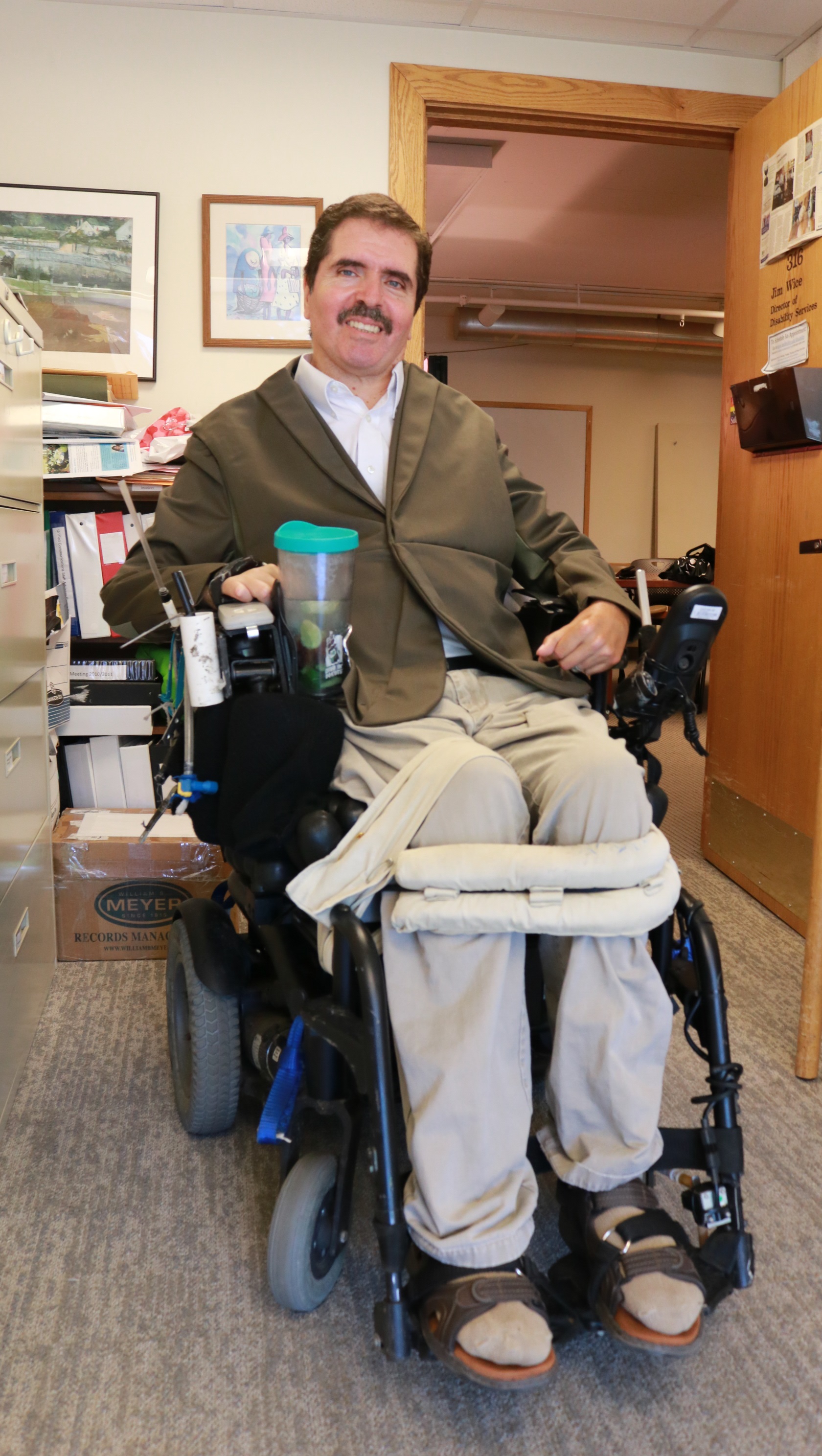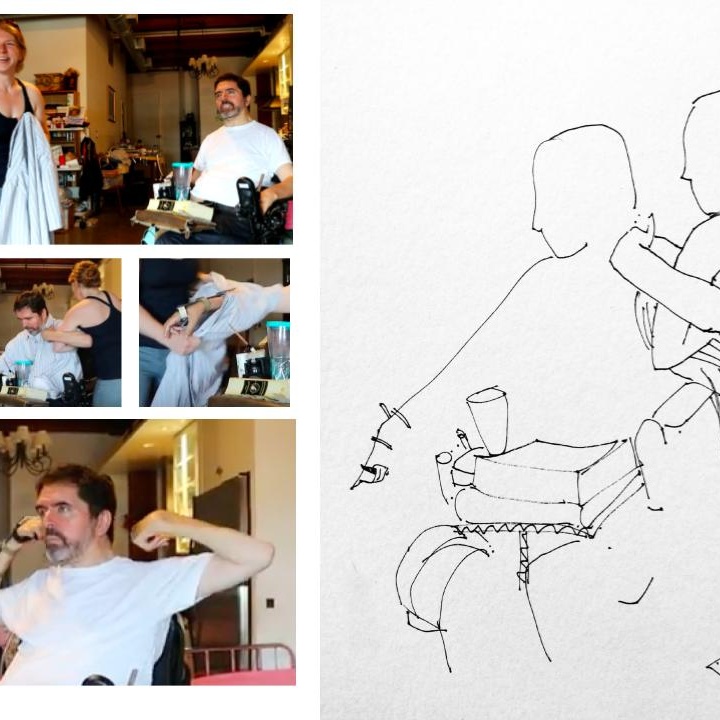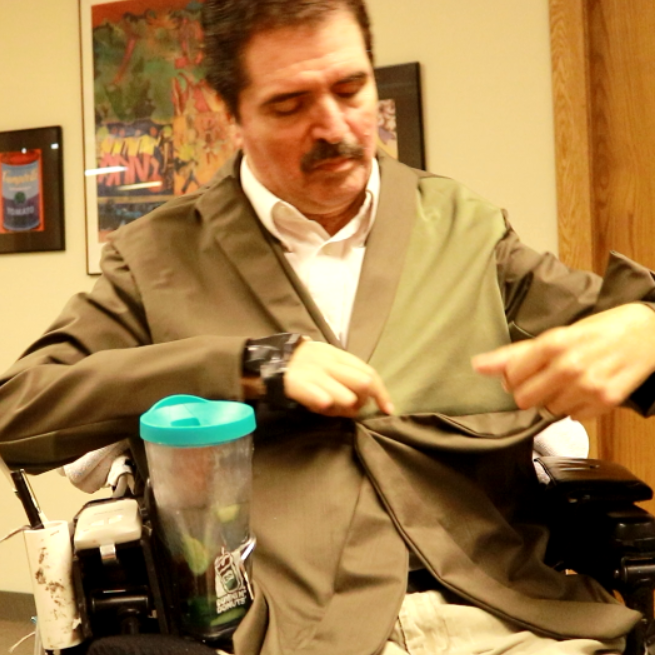
SUITable
As part of the MIT Open Style Lab in summer 2016, I worked on a team with an occupational therapist and two fashion designers to create a garment for our client, Jim. Due to a spinal cord injury, Jim has limited feeling and range of motion in his arms and torso. This made it difficult for him to adjust traditional clothing throughout the day, so we created a customized jacket that he could wear in multiple climates.


Getting to know Jim allowed us to determine what garment we could create for him. Jim is a dedicated power soccer player and enjoys painting, collecting antiques, and adaptive yoga. Since he works in an academia, Jim prefers a classic style that can transition from the office to soccer practice without impeding his range of motion. We learned that he often did not wear a jacket throughout New England winters since he is not able to make adjustments to zippers and buttons without assistance. Complications of his spinal cord injury prevent Jim from effectively regulating his body temperature, so he was excited about a jacket he could adjust as needed.
First and foremost, we needed to create a jacket that would allow Jim to be comfortable in different climates. To allow Jim more independence throughout the day, it needed to be fully adjustable and not restrict his range of motion. The jacket needed to be easy to clean and consistent with Jim’s classic style.
 So that the jacket was comfortable both indoors and outside, we created adjustable ventilation flaps on the chest and shoulders of Jim’s jacket. Jim can pull the flaps down to expose a cooling and breathable layer or fabric, or push them up to create more insulation. The flaps dock with hidden magnets for a subtle look.
So that the jacket was comfortable both indoors and outside, we created adjustable ventilation flaps on the chest and shoulders of Jim’s jacket. Jim can pull the flaps down to expose a cooling and breathable layer or fabric, or push them up to create more insulation. The flaps dock with hidden magnets for a subtle look.
Jim can further increase ventilation in his jacket by opening or closing the front using hidden push-pockets that he can hook his hands into. When closed, the front of the jacket secures with a magnetic “button”.

To evaluate the insulating properties of different fabrics, I used a temperature sensor paired with a heating pad and logged data over time in MATLAB. We chose Merino Perform WP from Woolmark for the main body of the jacket, and PowerDry from Polartec for both the flexible space under the arms and the upper chest ventilation area.







